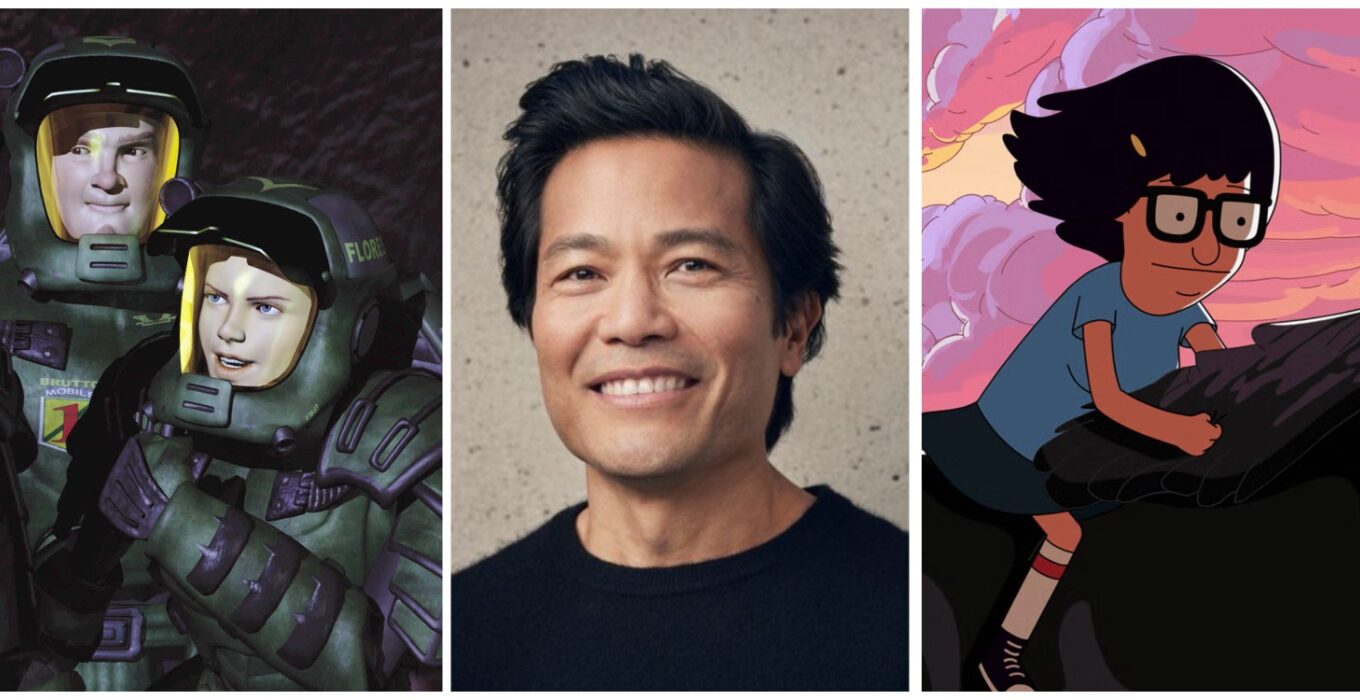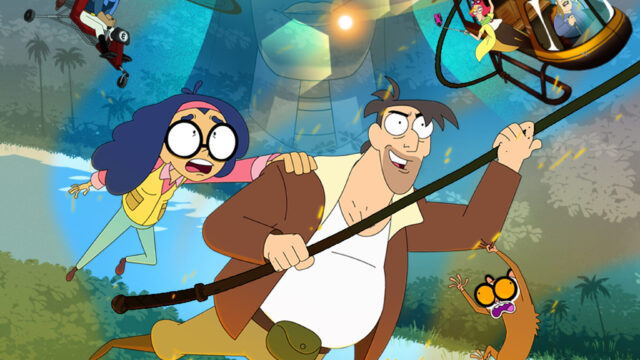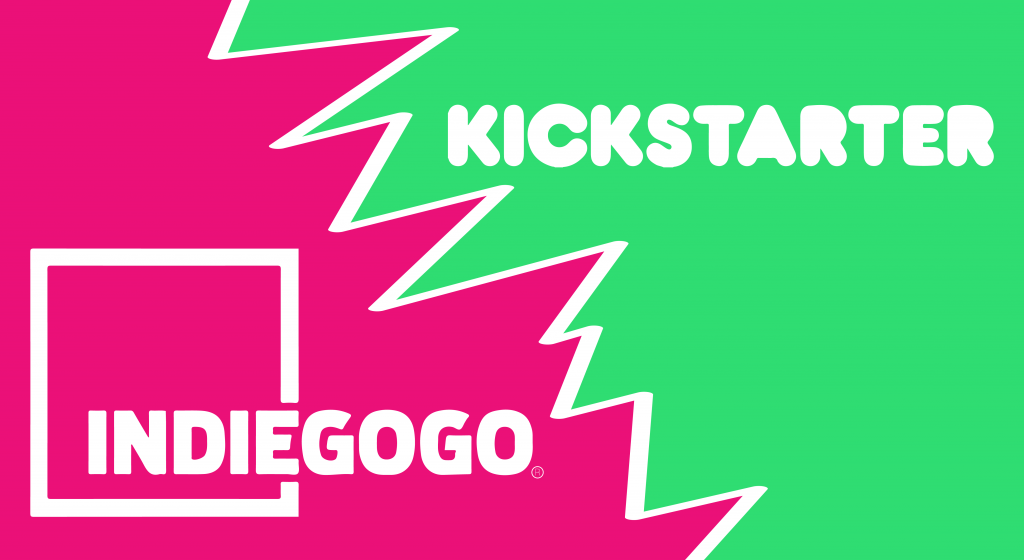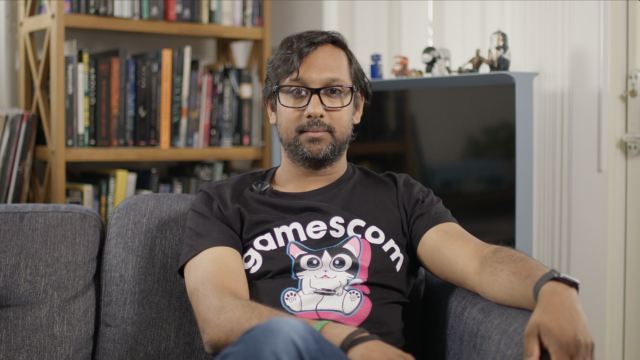[Exclusive Interview] From Roughnecks: Starship Troopers To Bob’s Burgers And Beyond: Joel Kuwahara Reflects On Nearly Three Decades Of Animation
Television has changed a tremendous amount over the past several decades, but animation is one medium where the evolution has been astronomical. The freedom that’s now possible in animated TV series is on a whole other level and the medium has expanded to include a wide range of genres beyond purely children’s programming or adult-oriented animation. Joel Kuwahara is a prolific name in animation whose previous work with Film Roman and Warner Brothers Animation has blossomed into a passionate portfolio of programming at Bento Box Entertainment. Kuwahara’s Bento Box productions have dominated FOX’s “Animation Domination” programming block and include the likes of Bob’s Burgers, The Great North, and Housebroken. Kuwahara opens up on three decades of animation as well as discussing some deeper cuts like his earlier days on Roughnecks: Starship Troopers Chronicles, working with Tom Hanks on the David S. Pumpkins Halloween Special, and blockbuster-to-animation series like Jumanji, Godzilla, and Men in Black.
Daniel Kurland: You’ve worked on a prolific number of series that make up FOX’s ever-changing animated slate, that includes everything from short-lived series like Allen Gregory to bigger successes like Bob’s Burgers, The Great North, and Housebroken. What do you think is the enduring appeal of these programs, why they’ve lasted for so long, and what does this reflect about TV audiences across different decades?
Joel Kuwahara: Well first, thank you for having any interest in interviewing me. I’m one of those people who typically works behind the scenes and working on shows from the ground up. When I say that, I literally mean that my animation career started at the very bottom. Not even a PA, but at an internship level. So to answer that, Bento Box was coincidentally acquired by FOX even though my introduction to primetime comedy started with FOX, you know, with The Simpsons. It’s funny that you mention not only the successful shows, but also the short-lived ones. I appreciate that term “short-lived” shows because I still think some of those programs are very good. They’re shows that I’d still gladly fight for, like Bordertown. I think that show was just ahead of its time when it debuted.
When I look at all of the different family situational comedies and workplace situational comedies, it always comes down to the characters’ points of view that the audience always relates to. They’ll always hit on topics that are in the current news cycle and trending, with pop culture and politics, and I think it’s that type of material that continually resonates and never gets old. There’s always something new and crazy in the headlines that’s crazier than life that we can then parody or put in our shows. I do think that it’s the successful shows like The Simpsons and Bob’s Burgers where it’s the characters that audiences enjoy. It’s because they’re relatable, they’re flawed like everyone human is flawed. Then you mix that with smart writing, fun visuals, and surprises–whether that’s music, visuals, guest appearances–and it always keeps things fresh and new.
Daniel Kurland: Further to that point, why has it been so important for FOX to champion a primetime animation block for over three decades? That’s not the norm anywhere else.
Joel Kuwahara: For one, I think it of course started with The Simpsons. 34 seasons later and it’s still lasted the test of time and continues to speak to its audience. I think having anchor shows is so important. You go back 30 years and you had The Simpsons and King of the Hill. These were strong shows. FOX’s support of these adult animated comedies that work for the whole family–both children and adults–was instrumental. Back in the day there would be entire families that surround the TV and watch these shows together. FOX has always supported that to the point where audiences know that FOX on Sunday night is going to have animation.
Not every show has succeeded there, but I think there have been some really fun swings. Sometimes you need to have a few swings at the plate until you figure out what’s a home run. To add to that, everybody wants the next Simpsons or the next King of the Hill and you can’t just boil those shows down to a simple formula. If you could, we’d have hits all the time. There’s something to that magic of strong writing, compelling characters, and unique design aspects. King of the Hill is a show that people still bring up when new shows are being pitched and developed. I would have never thought that such a slow-paced show that arguably doesn’t even need to be animated would be such a success, but it all comes down to strong characters.
I do think that it’s just that consistency that’s made it work for the most part. It’s that Sunday night consistency. The landscape on FOX has changed, but that’s the one element that’s unmovable and has remained a constant that audiences can rely upon. You have all of these changing of the guards at FOX, but that one thing has remained. I hope that legacy continues.
Daniel Kurland: There’s a real lost art to animated series from the ’80s and ’90s that were cartoon versions of major blockbusters. You worked on a number of series in this style between Jumanji, Godzilla, Extreme Ghostbusters, and Men in Black: The Series. Were those challenging productions to work on and valuable learning experiences in terms of matching their live-action counterparts and fitting their agendas?
Joel Kuwahara: Extremely challenging. When you think about shows like Godzilla, we did 52 episodes in a season. That’s a huge undertaking. Normally 22 episodes is a difficult production. 26 in children’s animation wasn’t uncommon at the time, but to go from 26 to 52 in a single season was wild. That means you’re doing double the work. You have two crews that are working parallel. You have a writing staff that’s trying to crank out these scripts. The animation team and studios that are involved are all working at this breakneck speed. It’s intense! The details in that show, too! The level of detail on the backgrounds and Godzilla were a few notches over what we would typically do in this type of genre, but it’s because of the style that we were going for.
That was just one show, but the other one that really comes to mind is Roughnecks: Starship Troopers. That was one of the earliest high-quality CG kids shows at the time. And if you look, we didn’t take any cheats on that show. Normally, what you would see in a children’s show is characters in helmets, but you can only see their eyes so that you don’t have to worry about lip-syncing their mouths. It makes your life 50% easier. We did it the hard way though with open masks where we still animated every lip movement. We had numerous studios working for us to help do the CG part because that was still a very heavy lift to get that level of photo-realistic animation, at the time. The expectations with a TV show were so high because the movie was this big hit that was still fresh in everyone’s minds. I still think that show holds up incredibly well considering it was done in like ’97–over 20 years ago–but that was such a hard production.
Then on the other side of things there was Men in Black with the lean, stylistic look to their characters. It was a very different type of show. That was a really fun time in my career during the ’90s. We worked hard, around the clock, and basically lived at the studio, but we did it because we loved it. Our life was animation, literally. Most of us were single and with no kids, so we just stayed at the studio, but it was fun. It was a different time. I don’t think you can get away with that now without getting in serious trouble. You don’t see that now. I’m still friends with a lot of those folks and they’ve all become Emmy winners, supervising directors, and leaders in their genres. There was one time where the power went out and some of the people were still getting work done by flashlight because they just wanted to get it done. It was fun.
Daniel Kurland: Similarly, you were also involved with the more recent retro animation throwback, Saturday Morning All-Star Hits!!, which I truly loved. What was it like to kind of revisit these older animation eras that now conjure so much nostalgia and why do you think that there’s a growing audience for this type of content?
Joel Kuwahara: Obviously it was intentionally designed to feel like a ’90s throwback show that you found in a vault. Ben Jones, our creative director for the studio, was heavily involved in getting the look and feel right. He’s a fan of that genre and he took extra care to give it that special texture. It almost feels like it was shot on film, you know? The filters and tricks go so far there and I thought it turned out great. It all kind of comes back for that passion and love for the genre, otherwise it would have never come together.
Daniel Kurland: A more recent production you were involved in that was a bit of a throwback to these older specials was the David S Pumpkins Halloween Special, based off of the Saturday Night Live sketch with Tom Hanks. Was that a surreal experience at all as well as a fun opportunity to return to this somewhat lost art of random holiday specials?
Joel Kuwahara: That one was fun and probably the personal highlight of my career! Because for one, I got to work with Tom Hanks and Peter Dinklage, who at the time was in the middle of Game of Thrones. And the other thing that makes that production memorable is that we were given ten weeks to get it done. Normally a half-hour animated series with zero development done can take at least 15 months. That came as a call coming over from an executive at NBC who wanted a special and asked if we could do David S. Pumpkins for Halloween. I honestly thought he meant Halloween of the following year. But no, he meant the Halloween that was only a few months away. I did a few calculations and strategies in my head and said that if they could cover the cost that I needed to get it done then I could do it.
They had no designs. They didn’t even have Tom Hanks signed on board yet. I think that they maybe had a first draft of a script by Mikey Day and Streeter Siedell, from Saturday Night Live. I loved that team because I instinctively knew that if they worked on SNL then they’re used to working fast. They were true to that. If I had notes then they’d get to them immediately. If I told them that I needed cuts then it was the same. We hit the ground running and part of the secret to making it work–if you watch it–is that I got all of the background hand-painted in house so they had a bit of this Scooby-Doo retro look. The reason for that is when people see a beautiful background they sometimes forget the limitations of what they’re otherwise seeing in the animation. I’m just being honest. We didn’t have as much time to throw in as much animation as we wanted, but we made sure that there was beauty around the characters. If we got that to work then audiences will be tricked to be more forgiving on the animation that has been rushed.
We got it done in like ten weeks. We recorded Peter Dinklage in Scotland. Tom Hanks was an absolute pleasure. He’s everything that people say he is in terms of being one of the nicest guys in Hollywood. There was a song that he had to do and he came in and gave it 110% percent. He did multiple takes and gave us whatever we needed. When he was done I thought that he’d be ready to bolt, but he hung out, signed autographs for the team, and couldn’t be nicer. It was the cherry on top for that production. It made it that much more memorable, fun, and rewarding. We got every note done. Sometimes you don’t get to every note. There are these “could be better” notes that you can’t get done, but we got every producer’s note handled. We pretty much got it done ahead of schedule. Mark Mothersbaugh did the music, too. We worked super hard and to me it was like, “Ten weeks? I can work hard for ten weeks.”
Daniel Kurland: In those types of situations, more time usually doesn’t even help. It’s that crunch element that brings out the best.
Joel Kuwahara: I agree with that. It forces you to make quick decisions and go by your instincts. There’s no time to second-guess yourself. Sometimes on other shows where you have too much time and you’ll take jokes that’s strong and overwrite it or overthink things. After all of that writing you sometimes end up with less. Going by your instincts on a tighter schedule can be a fun way to work sometimes.
Daniel Kurland: Keeping in line with holiday specials, one of the odder animated productions you were involved with was the animated Christmas special for The Nanny. I watched this when it initially aired and it’s become an odd holiday tradition for my family. Is there anything that you can say about the unusual nature of that project and if it might have ever become more?
Joel Kuwahara: You did your homework! I’ll tell you a little secret on that one, too. I worked on that one when I was working on The Simpsons and at Sony. That was basically my third job and I’d work at night doing that. That was actually the first Sony animated project. There was no Sony Animation. There was no Sony Family Entertainment. There was no division and that was the first TV animated project coming out of Sony. It was me, Lauren MacMullan the director, the coordinator, and that was it. It was like the three of us and a crew of some freelance artists putting that show together. That one was another project that was made out of love and being fans of Fran Drescher and The Nanny. It was a lot of fun to take something like that and put it into the animated world. That was another really fun time.
Daniel Kurland: Has there been anything in animation that has been getting you especially excited as of late, whether it’s television or film?
Joel Kuwahara: I wish that I watched more animation than I do. However, part of my daily routine is that I’m always scrolling through social media and things like Instagram to see what things people are talking about and what people are watching. I was never a huge fan of anime when I was growing up. The only things I watched were Speed Racer and Raideen. Those were the classics for me. As I’ve gotten older–maybe over the last seven years–I’ve really started to appreciate anime more. I always loved Miyazaki, but I’m talking more about some of the niche anime that were popping up. My God, my mind was blown over how sophisticated the action, art direction, and execution of it all. It was undeniable and I knew that I had to be more on top of these studios, artists, and producers.
Other than that, when it comes to features, I like to see–ever since Spider-Verse came out, everyone is trying to do the next iteration of something new and that people haven’t seen before. The new Teenage Mutant Ninja Turtles is the latest example of this. I think that movie looks beautiful and that they did such a good job with it. Arcane is another show that really pushes the limits of the medium and style. It really mixes styles in a way that’s fascinating for someone like me who loves the nuts and bolts of production and animation. It’s fascinating for me to deconstruct that type of animation and how they get those results. But there’s always something new that’s coming out. I’ve been seeing some really, really fun stuff, but that’s still just part of the equation. You still need a strong story and characters, but the animation and art styles that people are playing with now is so good.
The great thing about things like social media is that I’ll reach out to people whose work I see and think are professionals, but to my surprise, sometimes they’re not professionals. They’re just hobbyists who are playing with tools, but they’re getting such great results. It’s so fun to see that and I encourage them. People are really putting these animation tools to the test. Social media has been such a plus for these software companies because they’re getting all of this free press and promotion through these kids using these animation tools. It’s so great to see because it gets my creative wheels spinning, too. We’ve recruited people via social media to do special like three-second pieces into our shows. Especially when I’m looking for something new, dynamic, and outside of the style of the show. Usually social media will be the place that I’ll look.
Daniel Kurland: That’s beautiful. And then who knows what that relationship can trigger and lead into.
Joel Kuwahara: Absolutely. It’s all about nurturing new talent and giving them that exposure.




